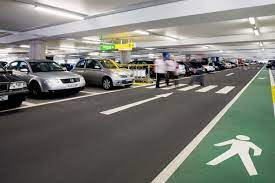Call for car park designs to evolve due to heavier electric cars
Many multi-storey car parks designed for cars of 1960s and 1970s
An influential group has called for the structural design of many of Britain’s multi-storey car parks to be “carefully considered” amid fears that older designs cannot cope with the weight of electric vehicles.
New guidance from The Institution of Structural Engineers calls for the car park design to evolve to cope with bigger, heavier electric cars, some of which have batteries which can weigh around 500kg.
Ten experts contributed to the guidance, which flags that the greater weight is putting strain on car parks that were built in the 1960s and 1970s for cars of that day and age.
For example, the 1970 Mini 1000 - a popular saloon from the day - weighs 620kg whereas the Kia E-Niro, a contemporary electric car, weighs 2,230kg.
Institution Fellow, Chris Whapples, who is an overseeing consultant for the guidance, told the Telegraph on Monday that many of the 6,000 multi-storey car parks across the UK could be under pressure.
“Potentially if we just ignore this issue then we could have a partial collapse,” he said.
“I’m not trying to create any scaremongering…not all car parks will have to close, only the very old ones, built in the 60s and 70s, which are in a very poor state of repair and have weakened over time which will probably need to have some work done to them.”
He emphasised city electric cars are less likely to be a problem but more executive saloons or people carriers. The Mercedes EQV can weigh up to 2,921kg.
Mr Whapples fears the problem could worsen with the UK set to ban the sale of new petrol and diesel fuel cars from 2030.

The Institution of Structural Engineers had commissioned a team of 10 led by Mr Whapples to review the issue. This proposed that car park owners should have their infrastructure reviewed by engineering firms to see if it needs to be strengthened.
However, if this may prove too expensive to some owners Mr Whapples suggests a 2,500kg weight limit could be enforced.
“Operators need to be aware of electric vehicle weights, and get their car parks assessed from a strength point of view, and decide if they need to limit weight,” he added.
“I think a lot of old owners will opt for imposing a weight limit rather than paying for strengthening measures.”
The Department for Transport has been contacted for a response.
The article was amended on June 6 to state that the Mini was a ‘saloon’ and not a ‘hatchback’ as previously reported.



Join our commenting forum
Join thought-provoking conversations, follow other Independent readers and see their replies
Comments